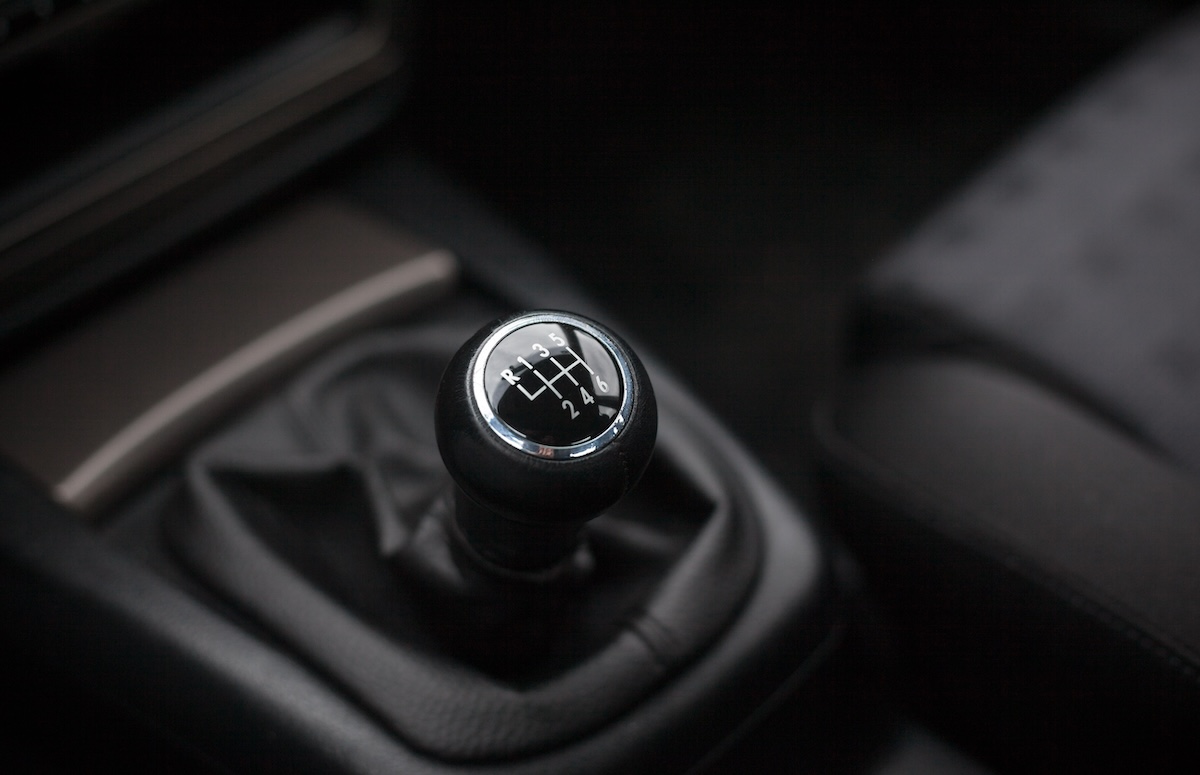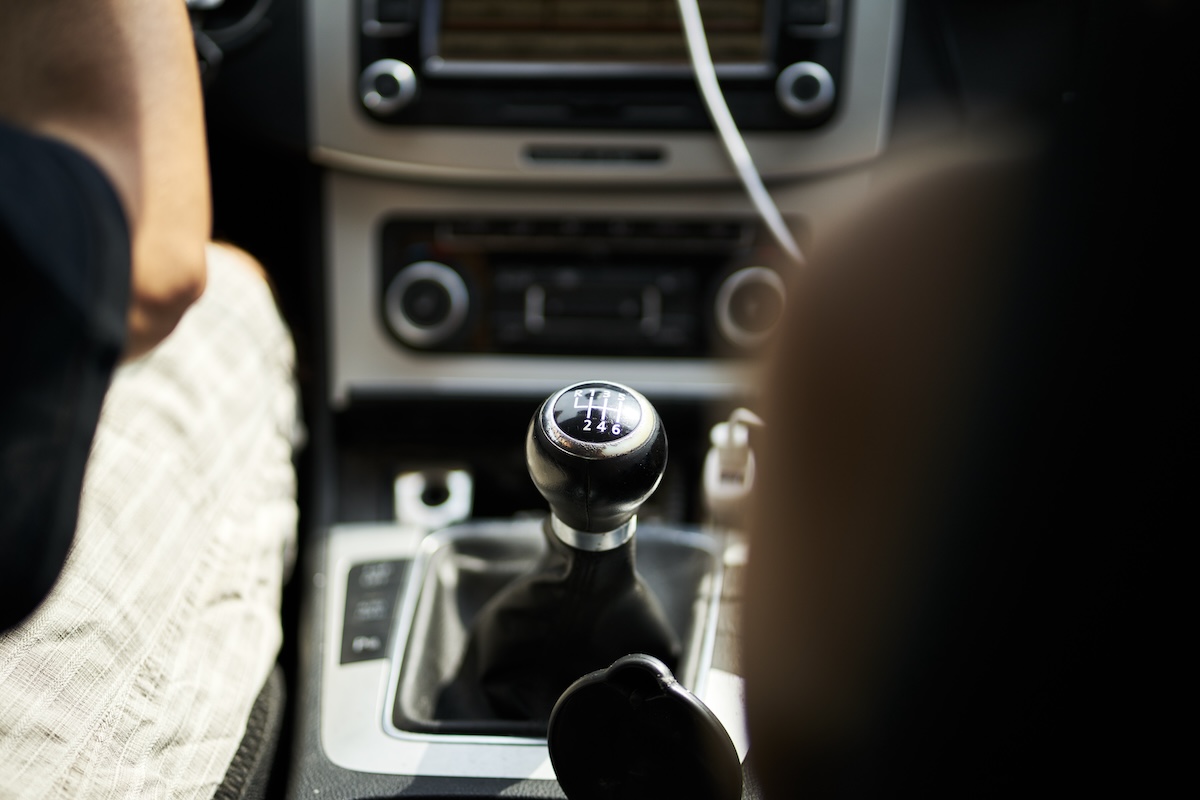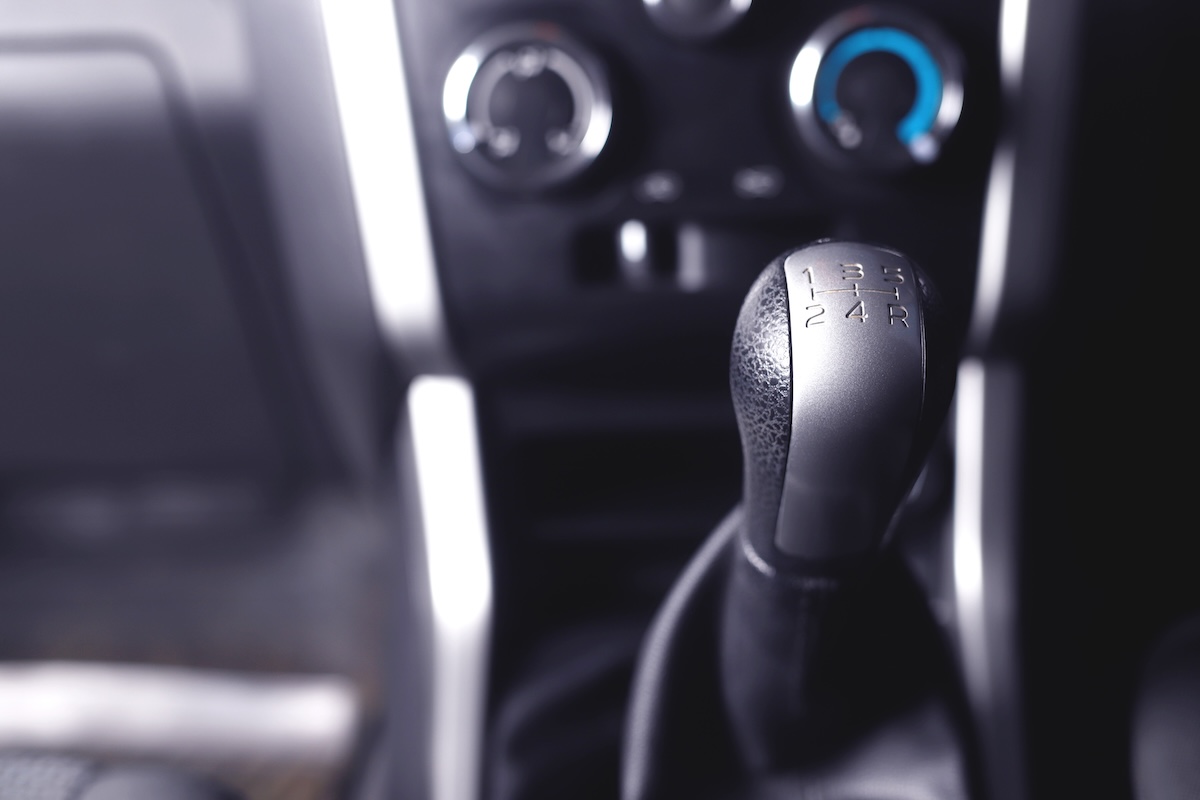
by Thom Blackett CarGurus https://www.cargurus.com
Once associated with lower costs, superior fuel economy, and in many cases, added performance, manual transmissions have gradually been replaced by advanced automatic transmissions that perform the same functions more quickly and efficiently. As a result, the so-called stick-shift gearbox is a modern-day rarity. In fact, when searching through nearly 80,000 used-car listings near Los Angeles, we found barely 3,000 that featured a manual transmission.
Clearly, encountering this automotive relic is not a common occurrence, but if you ever find yourself depending on one for transportation, you’ll need to know how to use it. So, we've put together a handy step by step guide on how to drive a manual car.

In simple terms, a transmission is a mechanism that transmits power from an engine to the drive wheels. For cars equipped with a traditional automatic or continuously variable transmission (CVT), all of that work takes place behind the scenes. The driver moves the gear shift (or shifter) into position (drive, park, reverse, etc.) and then applies the accelerator (throttle) and brake pedal as necessary.
With a manual transmission, the driver is responsible for changing gears by operating a clutch, which connects to a clutch pedal located to the left of the brake pedal. The clutch stops the transfer of power from the engine to the drive wheels, allowing the driver to shift gears. When the clutch pedal is released, engine power is once again delivered—or transmitted—to the driven wheels.
Like an automatic transmission, a manual gearbox has a reverse gear, but there are no drive or park selections. In their place is a set of numerically labeled gears. These are linked to ratios that match engine speed, measured in revolutions per minute (RPM) with wheel speed.
Manual transmissions come with varying numbers of gears, different shift patterns, and unique features. The Toyota Tacoma, for example, has a switch that allows the truck to start without using the clutch, and Hyundai is reportedly developing a modern manual gearbox that employs sensors in lieu of a clutch pedal. For this article, we’ll be sticking with the admittedly uncommon but undeniably basic 4-speed H-pattern: 1st gear (top left), 2nd gear (bottom left), 3rd gear (top right), and 4th gear (bottom right). Between these gears is the neutral position. Reverse would be to the right of 4th gear.
Lastly, the look and feel of a manual gearbox vary greatly by vehicle type, brand, and age. An older work truck, for example, may have what we’d call a sloppy shifter with long throws. Translation: the shifter feels like a thin round peg bouncing around inside a large square hole even when in gear, and you’ll be moving that shifter quite a distance when going from 1st to 2nd gear, 2nd to 3rd, and so on. A sporty car, such as a Honda Civic Si, has a more precise gearbox with short throws for faster shifts during aggressive driving. Similarly, the stiffness of springs linked to the clutch pedal varies and affects how much leg strength you’ll need.

Before doing anything else and regardless of whether you’re on a hill or a flat surface, you’ll want to make sure the parking brake (also called the emergency brake or handbrake) is engaged to keep the vehicle stationary. This is necessary since a manual transmission car has no “park” gear.
Next, use your right foot to apply pressure to the brake pedal as normal, and use your left foot to depress the clutch pedal all the way to the floor. Move the shifter to the neutral position, which would be the horizontal line in the center of our H-pattern example. If you can move the shifter left to right at least a couple of inches, you’ll know the transmission is in neutral. Then, turn the key or press the start button. At that point, you can remove your foot from the clutch pedal.
If you attempt to start the car without the clutch pedal engaged and the transmission in any gear other than neutral, there’s a good chance the vehicle will lurch forward or backward. Along those same lines, starting the car out of gear without the brake pedal pressed or parking brake applied will allow the car to roll. Either of these scenarios could cause damage or physical harm. When starting the car, just remember: clutch in and brake on.
To park the vehicle, put your feet on the clutch and brake pedals, set the parking brake, turn the key off, and shift the transmission into first gear. Leaving the car in first gear when parked reduces the chances that it will roll away, should the parking brake fail for any reason.

With the vehicle started, let’s work on making it move. It’s best to start on a flat surface where the car is less apt to roll backward or forward down a slope.
When the car is on, with the clutch pedal fully pressed against the floor and your foot on the brake pedal, release the parking brake and move the shifter into first gear by pulling it to the left and then pushing it forward toward the front of the car. The transmission is now in gear, but—with the brake pedal depressed—the vehicle won’t move until the clutch pedal is released.
This part requires the most finesse. First gear will start to move the car forward as soon as the clutch grabs (sometimes referred to as the bite or biting point) as it is slowly released from the floor. You’ll feel this with your foot through the clutch pedal, and it's another aspect that varies widely depending not only on the vehicle but also on the condition of the clutch. Some will bite immediately, while a worn clutch may not bite until you’ve let the pedal release several inches from the floor.
Once you feel the clutch grab, your right foot needs to carefully apply pressure to the accelerator pedal. The use of the two pedals needs to be balanced; as you release the clutch, you'll need to add more throttle. Failure to modulate this transition properly will lead to stalling and premature clutch wear, but it happens to every manual-transmission newbie.
For moving backward, the process is the same, except the H-pattern shifter is moved to the right and then pushed toward the rear of the car. Some models will require pushing the shifter down or pulling a lever to engage reverse.
If starting on a hill, there are a couple of techniques that will work. Travis Hanson of the Team O’Neil Rally School in Dalton, NH, recommends that new drivers focus on identifying the clutch’s bite point, and applying throttle lightly while slowly releasing the clutch once that point is hit. “Once the clutch is holding on the hill,” Hanson instructs, “your right foot can come off the brake and move to add a small amount of throttle, while your left foot slowly releases the remainder of the clutch. Yes, this is slipping the clutch some, but it is done at low RPM, and therefore does not create much heat, which is what will cause significant wear. Slipping the clutch above 2,000 RPM is when you will see the clouds of smoke, the smell, and the wear.
Alternatively, you can go through the same process, but with the parking brake engaged. As you take your right foot off the brake and move it to the accelerator, simultaneously release the parking brake as you add throttle. During a hill start, you may feel the vehicle "sit" on its back wheels for a moment before taking off.

The gears of a manual transmission keep an engine operating most effectively and efficiently at all times. As you accelerate, the car's cylinders will rotate at a faster and faster pace. You can see this reflected on the tachometer as the RPM readout rises. When you shift up a gear, the engine RPM drops and the process starts again. So, as your speeds change, or the engine needs to work harder to pull the car up a steep hill, the driver must do the job of an automatic transmission and shift gears manually. A tachometer helps indicate when that should happen by showing a redline (literally a line or area on the gauge marked in red). Consistently operating at or above redline can cause significant mechanical damage.
Determining when to shift also comes with practice and experience. To do so, you’ll fully depress the clutch pedal as described above and let off the gas pedal. When accelerating, you’ll upshift by moving to a higher gear (first gear to second gear, etc.) and once again balance the release of the clutch pedal with application of the throttle. When decelerating, you'll downshift to a lower gear but instead apply brake pressure as you release the clutch. When coming to a complete stop, shift into neutral and release the clutch.
Enthusiast drivers change gears employing a skill known as heel-toe (or heel and toe), where they apply brake and throttle pressure simultaneously to avoid the jerking motion that can come from a high-speed downshift. Nissan is one company that has programmed this into some of its manual gearboxes with what it calls rev matching. Strictly speaking, this is not a necessary practice, and new drivers should ignore this until they’ve mastered the basics.
And one more word of advice: Avoid riding the clutch. That common phrase refers to resting your foot on the clutch pedal when you’re not using it. Some drivers get into this habit, which we assume must limit the tremendous physical exertion required to move one’s foot a few inches. Unfortunately, it damages the clutch and leads to a hefty repair bill.
Driving a manual transmission car is no longer a requirement for driving school, passing a driving test, or getting one's driver's license. After all, with so few manual cars on used-car lots, and even fewer among the new-car ranks, you may soon have better odds of winning the lottery than spotting one of these vehicles in the wild. That said, with a bit of patience, a big parking lot to practice in, and perhaps a buddy who doesn’t care what you do to his clutch, learning to operate a manual transmission is something any driver can achieve.
Plus, driving instructors and old-timers (like some of us at CarGurus) will tell you that shifting your own gears provides a more engaging and enjoyable driving experience than you would get from an automatic car.